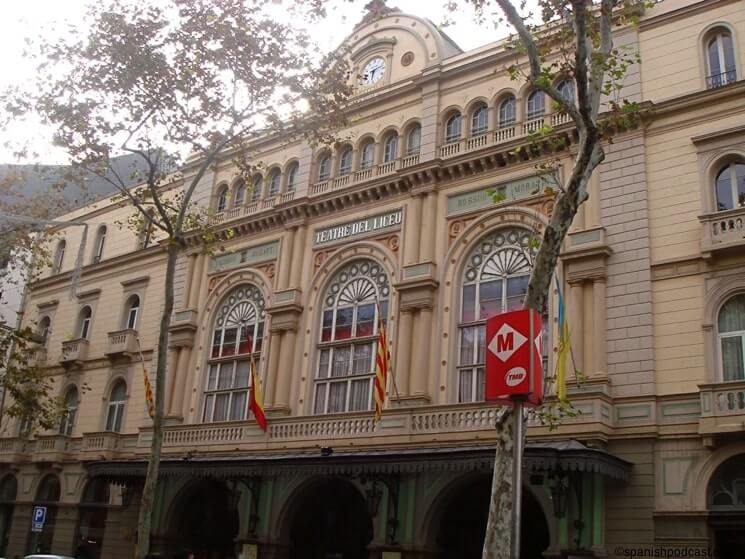
The Monastery of the Benedictines Monestir Santa Maria de Montserrat is the spiritual centre of Catalonia and a popular pilgrimage site among Catholics in Spain.
The hotel is named after its location 50 km from Barcelona. It is a rocky limestone mountain called Montserrat (split mountains). As the Catalan poet Werdaguer wrote in the hymn Virolai to the Virgin Mary, which is sung daily during services to the monastery: “The mountains were cut by angels in order to build a palace for the Virgin Mary among them”.

There used to be a seabed on the site of the present mountain, which later became a mountain range. As a result of the movement of the glacier, Mount Montserrat was detached from the range of the Pyrenees, and its rocks have shaped like stone idols. Some of them are inspired by associations that formed the basis of their names (for example, “God’s finger” or “Elephant’s trunk”). The enchanting, unearthly-looking panorama of the mountain and the monastery at an altitude of 725 m inspired artists, poets and composers for centuries.
History
The first written document on this area, dated 880, mentions four hermit monastery, including and dedicated to the Virgin Mary. In the same year, a statue of the Virgin Mary was discovered in a nearby cave. It was found thanks to the dazzling light coming out of the cave, accompanied by an angelic melody. The surrounding shepherds noticed a miraculous phenomenon. The statue was seen by the bishop, who, after making sure that it was too large, ordered to build the chapel of Capella de la Santa Cova, the first building of the future monastery. After a while the statue disappeared as suddenly as it appeared.
The monastery was founded in 1025 on the initiative of the abbot Olib (abbot of the monastery of the same name in the city of Ripola). The glory of the Monastery of Montserrat in the following centuries far surpassed that of the neighboring monasteries, including the Ripole monastery, whose subsidiary it was at first. Also, it’s known about Ignatius Loyola’s pilgrimage here. It is believed that the idea of founding the Jesuit Order, which was very influential in the Middle Ages, appeared to him after a night of prayer in front of the Virgin Mary sculpture.
At the end of the 16th century, the new basilica of the monastery was built and consecrated in a mixed Renaissance and Gothic style. The famous statue was moved to it from the old Romanesque church.
In 1811, the monastery was almost entirely destroyed by the Napoleonic troops. Only the Romanesque portal of the cathedral and fragments of the Gothic gallery were preserved intact. Fortunately, the main value of the monastery was hidden by the parishioners in advance. After several decades of neglect, in the middle of the 19th century, the Benedictine community, actively supported by the Catalans, began to restore the monastery, which lasted for almost a century. Among the specialists who took part in it was also a beginner architect Antoni Gaudi.
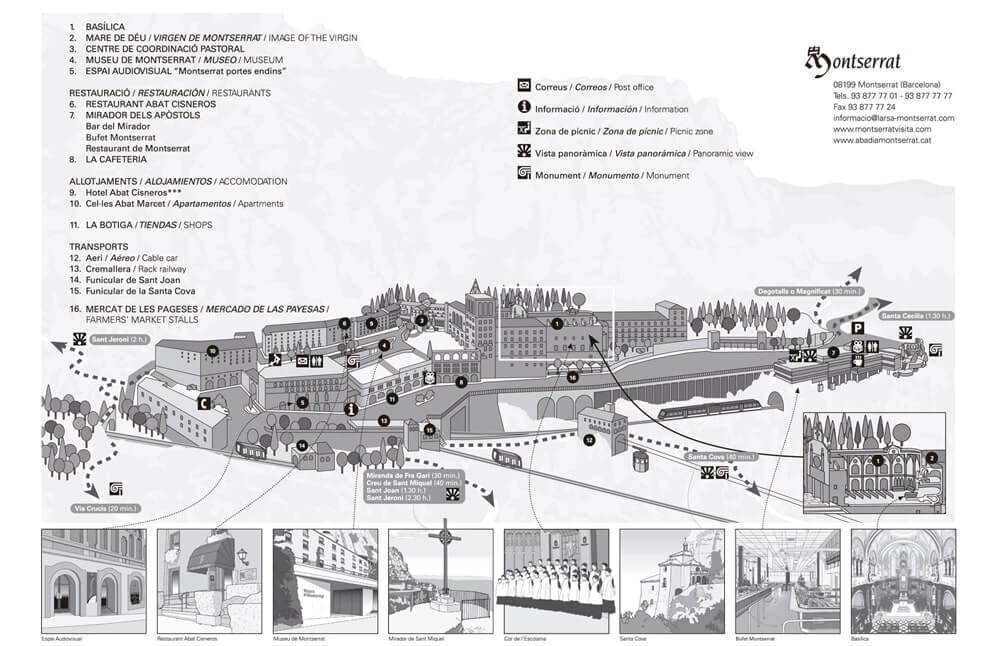
In 1881, the Pope named the Virgin Mary of Montserrat the Holy Protector of Catalonia. The Cathedral of Montserrat, which preserves the relic, was awarded the status of Small Papal Basilica. The reconstructed monastery became a stronghold of the Catalan national identity. During the dictatorship of Franco Montserrat was the only place in Spain where services and weddings were conducted in the persecuted Catalan language.
In 1987, the mountainous area adjacent to the monastery was transformed into the National Park of Catalonia. It is home to a thousand and a half species of flora and many animals. There are hiking trails with signs and even decorative sculptures in the park. In recent decades, Mount Montserrat has become a popular hiking and climbing destination.
Monastery of Montserrat today
The main building of the monastery is the XXVI century basilica, often called the cathedral. Its interior has the seal of the style that prevailed during the period of restoration – modernism. The altar carved into the rock is decorated with silver and enamel. The Throne Room of the Cathedral is especially magnificent, where its main relic, the Black Madonna, is kept on the silver throne. The lamps of the hall were presented to the monastery by different communities of Spain.
The current Monastery of Montserrat now houses 79 monks. In addition to performing religious rites and repairing church utensils, they are busy servicing numerous pilgrims staying in the monastery’s hotel. They are also engaged in the production of natural products – honey, wine, cottage cheese, liqueurs. Some of them are engaged in scientific theological and musical activities (in particular, with boys of the church choir).
At the monastery there is the Biblioteca de Montserrat, a scientific library of hundreds of thousands of volumes, including hundreds of valuable manuscripts. It is accessible only to major male scientists. The printing house at the monastery is one of the first and best in the country.
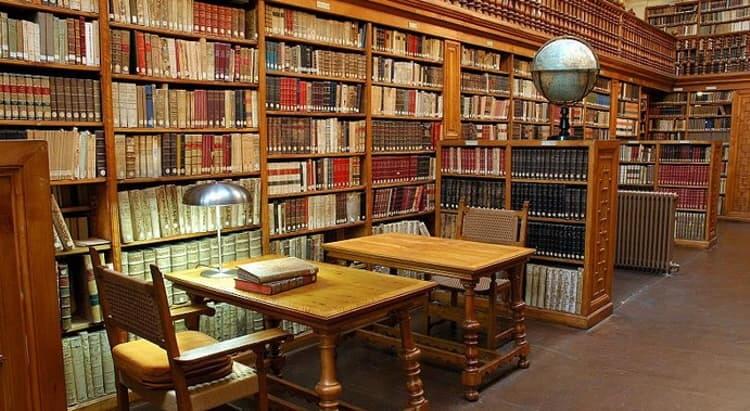
The Montserrat Mountain and Monastery is the main religious shrine and national symbol of Catalonia. Major events in the life of the Catalans are often accompanied by a visit to the monastery to worship the Virgin of Montserrat. Montserrat is one of the most popular female names in Catalonia.
The Montserrat is open to the public from 7:00 a.m. to 7:30-8:30 p.m.
The Virgin Mary of Montserrat (Mare de Déu de Montserrat)
The Throne Room of the Monastery houses the Mare de Déu de Montserrat. The Catalan shrine is a copy of the original 95-centimetre statue of the Virgin Mary, dated to the end of the 12th century, in golden garments, made of poplar wood.
The face of the Virgin Mary, as well as the baby Jesus – an unusual dark color. It is believed that the oxidized lacquer that coated these parts of the sculpture painted them. According to another version, they were colored from oil lamps and candles that were constantly burning in front of the statue. It is considered proven that in the 12th century the face and hands of Madonna were covered with leaded whitewash. During the restoration of the XVI century, the fragments darkened over the centuries were painted chestnut, which continued to darken after that.
The centuries of the sculpture’s existence had an impact on some of its other fragments as well: it had to be replaced with new ones.
The statue of La Moreneta (“Darkie” as it is lovingly called by the Catalans) has not only religious value, but also undoubted artistic merits. Thin and carefully written features create an expressive and gentle face, from which blows a friendly calmness. The status of the greatest saint is confirmed by the gilded crown. The colourful 16th century handkerchief, decorated with beautiful patterns and ornaments on a white background, covers the head and shoulders.
The figure of the Virgin Mary is dominated by Romanesque proportions. In the right hand Black Madonna holds a sphere symbolizing the power over the universe. With a gesture of the left hand the Mother of God protects the Child. The hands of the statue could not withstand the continuous touching of many believers and were replaced. Now the main part of the sculpture is behind the glass cover: you can only touch the sphere in the right hand of the Black Madonna.
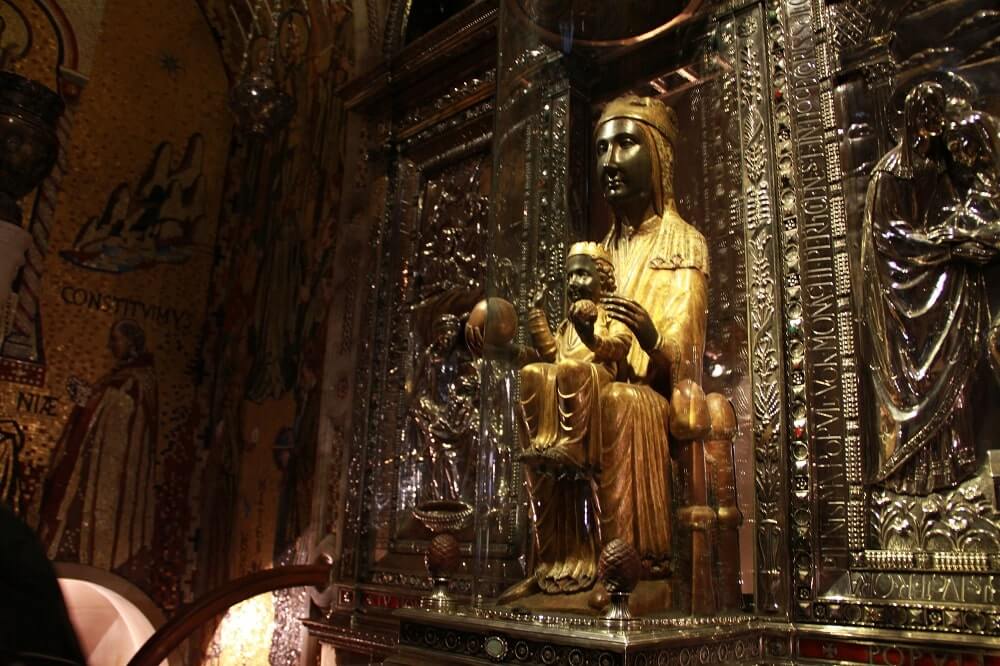
The throne on which the Virgin Mary is also made in the XVI century. The figure of the Child is even later – the first quarter of the XIX century, so it should not be searched for Romanesque features. The clothes are stylized as a mother’s garment. It is assumed that by the time of this restoration the face and hands had already acquired a black shade, and the entire sculpture was colored anew.
The current statue is constantly being visited by believers striving to worship the shrine, touch the hand and make a wish. There is a room in the cathedral where those who prayed to the Virgin Mary bring proof of the prayers that have come true – crutches, used wedding dresses, etc.
The Feast of the Madonna of Montserrat is celebrated annually on April 27. In addition to masses and psalms in the monastery, there are concerts, folklore dances and traditional Catalan “towers” made up of people.
Museum
On the territory of the monastery there is a Museo de Montserrat with several permanent exhibitions:
- icons dedicated to the Virgin Mary;
- Orthodox icons;
- Church jewels;
- Archeological finds from the Middle East;
- paintings of the XV-XVIII centuries;
- paintings and sculptures of XIX-XX centuries, including paintings of outstanding artists.
Working hours of the museum: 10:00 a.m. till 5:45-6:45 p.m. Unlike the monastery, the entrance to the museum is paid: it costs 7 EUR.
Boys’ Choir (Escolania de Montserrat)
The Escolania de Montserrat choir is one of the oldest on the planet. There is documentary evidence of its existence in the XIV century. The choir is made up of 50 boys 9-14 years old, selected mostly in Catalonia. The boys enrolled in the choir, together with the regular schoolboy, receive a thorough musical education. In addition to choral singing, it consists of vocals and the development of two musical instruments. The choral repertoire is spiritual and classical choral music.
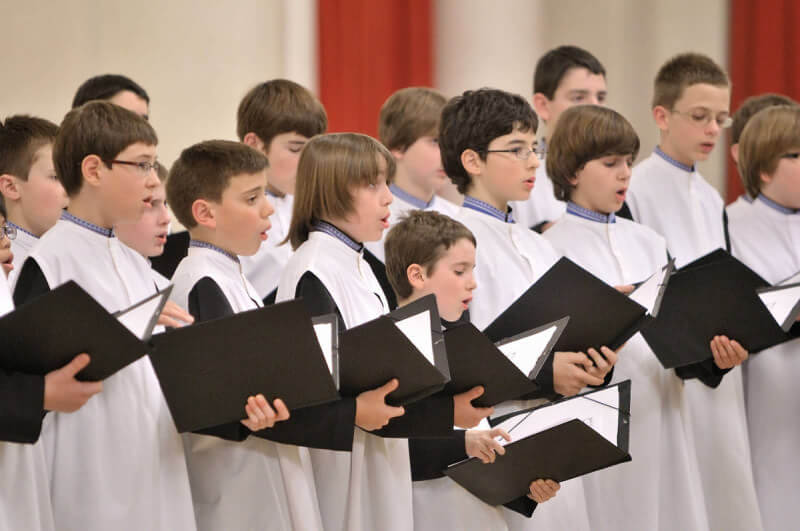
For most of the year, Escolania participates in daytime and evening worship services daily. In particular, the Virolai de Montserrat anthem dedicated to the Virgin Mary is performed at 1:00 p.m. In the summer and at Christmas time, the choir has vacation. For half a century now, Escolania has been on tour around the world from time to time.
How to get there?
It is recommended that you visit the monastery from Barcelona on your own:
- Get to España Station, a green branch of the Barcelona Metro.
- Going down and following the signs, go to the FGC suburban train station.
- One of the two tickets for the L5 Plaza España – Manresa-Baixador trains can be purchased at the ticket office: to Aeri de Montserrat or Monistrol de Montserrat (next);
- After exiting at the foot of the Montserrat, get on the ropeway in the first case and on the Gremallera de Montserrat railway in the second case.
Tourists in good shape can climb the mountain with one of the 10 picturesque hiking trails.
It should not be confused with a cable car operating on the territory of the monastery and the funicular park. It is designed for local movements on the mountain, in particular, to the Holy Cave.


